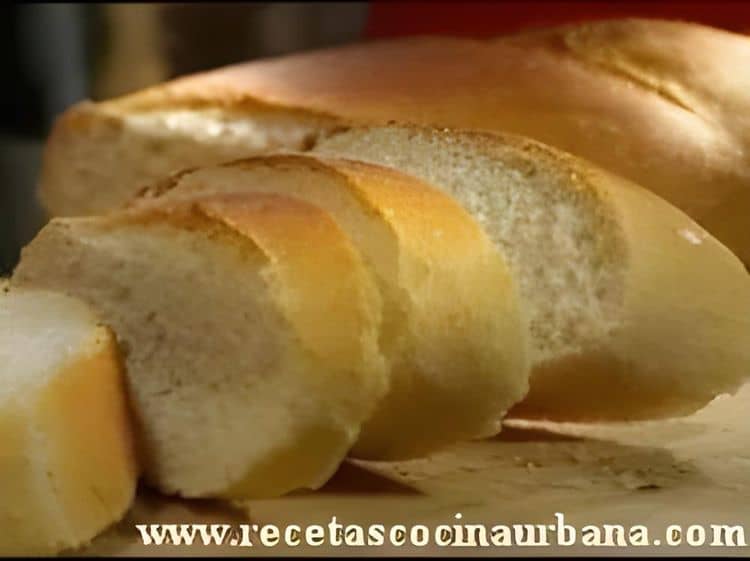Sharing French bread is one of the most well-known and appreciated types of bread in various parts of the world, beyond France and Italy. In fact, in Argentina, this bread is among the most popular in terms of consumption. Crispy and golden-crusted with little crumb, French bread is highly appetizing yet simple to prepare at home. You only need a few ingredients and some baking secrets to achieve excellent bread with a golden crust, which...

Stuck mid-recipe?
Chefadora AI has the answer - timers, swaps, step-by-step help.
Ingredients
 all-purpose flour375g
all-purpose flour375g water250mL
water250mL- fine salt1tsp
 dry yeast1tsp
dry yeast1tsp sugar1tsp
sugar1tsp semolina1tbsp
semolina1tbsp egg white1
egg white1 water1tbsp
water1tbsp
Nutrition (per serving)
Calories
687.8kcal (34.39%)
Protein
19.8g (39.5%)
Carbs
141.8g (51.55%)
Sugars
2.5g (5%)
Healthy Fat
1.0g
Unhealthy Fat
0.3g
% Daily Value based on a 2000 calorie diet
How to make Economical French Bread
- Step 1
In a cup, place the dry yeast and add the teaspoon of sugar and a few tablespoons of warm water to dissolve the mixture.
- Step 2
Stir with a fork and let the yeast activate, covering the cup with a cloth.
- Step 3
In a bowl, combine the flour and salt. Mix and create a well in the center where you will add the yeast mixture and warm water (not exceeding 40°C/104°F). Gradually mix and incorporate the flour until a soft dough forms that pulls away from the sides of the bowl.
- Step 4
Place the dough ball on a floured surface and knead for about 15 minutes, giving it a few firm presses to activate the gluten, until the dough becomes elastic, smooth, and flexible.
- Step 5
Transfer the dough ball to a lightly oiled bowl and cover with plastic wrap. Let it rise until it doubles in size.
- Step 6
Once risen, place the dough on the floured surface and press it with your knuckles to remove excess air.
- Step 7
Cover the dough with a cloth and let it rest for 10 minutes.
- Step 8
Divide the dough into two equal portions and roll each piece out with a rolling pin into rectangles measuring approximately 25-30 cm (10-12 inches) long by 20 cm (8 inches) wide.
- Step 9
Roll each rectangle tightly into a spiral, starting from the longer side, and pinch the end to seal the roll, forming baguettes.
- Step 10
Place each baguette on a baking tray that has been lightly sprinkled with semolina, with the seam side facing down.
- Step 11
Lightly beat the egg white with the tablespoon of water and brush this mixture over the surface of the baguettes.
- Step 12
Cover the baguettes with a cloth and let them rise in a warm place for 30-40 minutes, until they double in size.
- Step 13
Using a sharp knife, make 3 or 4 diagonal cuts about 0.5 cm (1/4 inch) deep on each baguette.
- Step 14
Bake in a preheated oven at 190°C (375°F) for 20 minutes. Remove from the oven, brush again with the egg white and water mixture, and return to the oven for another 10 minutes or until the base sounds hollow when tapped with your knuckles, indicating the bread is fully baked.
- Step 15
Remove from the oven and let the baguettes cool on a wire rack.
Nutrition (per serving)
Nutrition (per serving)
Calories
687.8kcal (34.39%)
Protein
19.8g (39.5%)
Carbs
141.8g (51.55%)
Sugars
2.5g (5%)
Healthy Fat
1.0g
Unhealthy Fat
0.3g
% Daily Value based on a 2000 calorie diet
Tips & Tricks
Ensure the water used for activating the yeast is warm, not hot, to avoid killing the yeast.
Knead the dough thoroughly to develop the gluten, which gives the bread its structure and elasticity.
Brushing the baguettes with the egg white and water mixture helps achieve a golden and crispy crust.
Allow the dough to rise in a warm, draft-free area for the best results.
FAQS
Can I use whole wheat flour instead of all-purpose flour?
Yes, you can substitute whole wheat flour, but the texture and flavor of the bread may differ slightly.
How do I know if the bread is fully baked?
Tap the base of the baguette; if it sounds hollow, the bread is fully baked.
Can I freeze the baguettes?
Yes, you can freeze the baguettes after they have cooled completely. Wrap them tightly in plastic wrap or aluminum foil.
What is the purpose of semolina on the baking tray?
Semolina prevents the baguettes from sticking to the tray and adds a slight crunch to the base.
Can I skip the egg white brushing step?
You can skip it, but the egg white brushing helps achieve a golden and crispy crust.
Marnirni-apinthi Building, Lot Fourteen,
North Terrace, Adelaide, South Australia, 5000
Australia